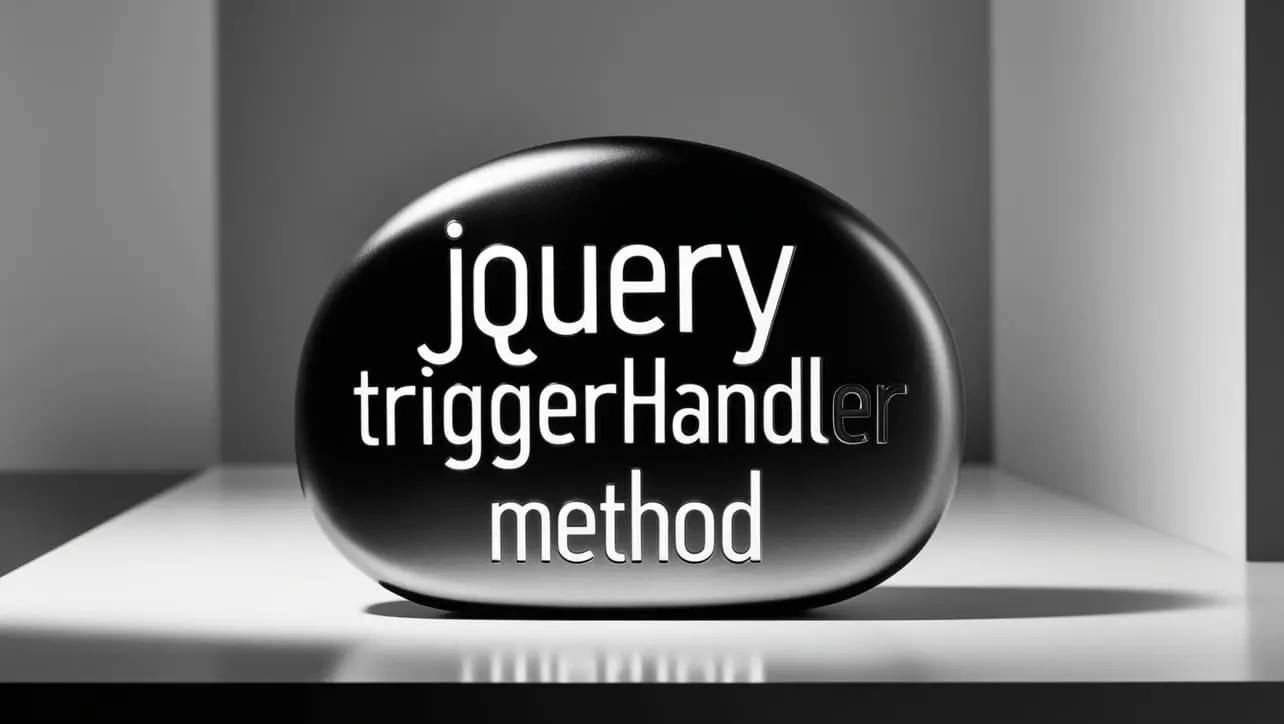
jQuery Topics
- jQuery Introduction
- jQuery Callbacks
- jQuery deferred
- jQuery selectors
- jQuery Ajax Events
- jQuery Ajax Methods
- jQuery Keyboard Events
- jQuery Keyboard Methods
- jQuery Form Events
- jQuery Form Methods
- jQuery Mouse Events
- jQuery Mouse Methods
- jQuery Event Properties
- jQuery Event Methods
- jQuery HTML
- jQuery CSS
- jQuery Fading
- jQuery Traversing
- jQuery Utilities
- jQuery Properties
jQuery .triggerHandler() Method

Photo Credit to CodeToFun
🙋 Introduction
jQuery offers a plethora of methods to streamline JavaScript development, and one such method is .triggerHandler(). This method provides a way to trigger events bound to elements without affecting their default behavior. Understanding and mastering .triggerHandler() can significantly enhance your ability to create interactive and responsive web applications.
In this guide, we'll explore the usage of the jQuery .triggerHandler() method with comprehensive examples to help you harness its full potential.
🧠 Understanding .triggerHandler() Method
The .triggerHandler() method is designed to trigger the specified event handlers bound to an element without executing the default behavior associated with the event. Unlike .trigger(), which triggers both the event handlers and the default behavior, .triggerHandler() solely focuses on invoking the event handlers.
💡 Syntax
The syntax for the .triggerHandler() method is straightforward:
$(selector).triggerHandler(eventName, [data])📝 Example
Triggering Click Event Handlers:
Suppose you have a button with a click event handler attached to it. You can use
.triggerHandler()to programmatically trigger the click event without actually clicking the button:index.htmlCopied<button id="myButton">Click me</button>example.jsCopied$("#myButton").click(function() { alert("Button clicked!"); }); $("#myButton").triggerHandler("click");This will trigger the click event handler and display an alert with the message Button clicked!.
Passing Data to Event Handlers:
You can also pass additional data to the event handlers using
.triggerHandler(). For instance:example.jsCopied$("#myButton").click(function(event, data) { console.log(data.message); }); $("#myButton").triggerHandler("click", { message: "Hello from triggerHandler()" });This will log the message Hello from triggerHandler() to the console when the button is programmatically clicked.
Preventing Default Behavior:
Unlike .trigger(), which executes both event handlers and default behaviors,
.triggerHandler()only invokes event handlers. Therefore, it does not affect the default behavior associated with the event. For example:example.jsCopied$("#myLink").click(function(event) { event.preventDefault(); alert("Link clicked!"); }); $("#myLink").triggerHandler("click");This will display an alert with the message Link clicked! without actually navigating to the link's target.
Handling Custom Events:
.triggerHandler()is not limited to built-in events; you can also use it to trigger custom events and pass data to their handlers, providing flexibility in event-driven programming.
🎉 Conclusion
The jQuery .triggerHandler() method is a versatile tool for triggering event handlers bound to elements, providing fine-grained control over event execution without affecting default behaviors. Whether you need to simulate user interactions, pass data to event handlers, or prevent default behaviors, .triggerHandler() offers a reliable solution.
By mastering its usage, you can create more responsive and interactive web applications with ease.
👨💻 Join our Community:
Author

For over eight years, I worked as a full-stack web developer. Now, I have chosen my profession as a full-time blogger at codetofun.com.
Buy me a coffee to make codetofun.com free for everyone.
Buy me a Coffee












If you have any doubts regarding this article (jQuery .triggerHandler() Method), please comment here. I will help you immediately.